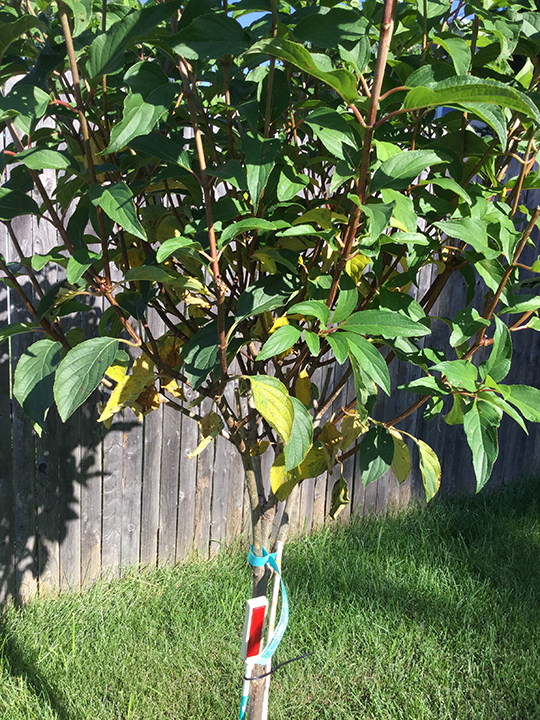The Greatest Guide To Hydrangea Leaves Turning Yellow
Table of ContentsOur Hydrangea Leaves Turning Yellow StatementsHydrangea Leaves Turning Yellow Fundamentals ExplainedSome Known Facts About Hydrangea Leaves Turning Yellow.Excitement About Hydrangea Leaves Turning YellowHydrangea Leaves Turning Yellow - An OverviewNot known Facts About Hydrangea Leaves Turning Yellow
One possibility is that the plant is not getting adequate sunshine. Throughout the winter months, the days are much shorter, and the sunlight is not as extreme, so make sure to position your Hydrangea in a place where it will access the very least six hours of sunshine each day. An additional reason for Hydrangea yellow leaves in winter season can be way too much water.The fallen leaves may be transforming yellow due to temperature level tension. Hydrangeas like cooler temperature levels, so if the plant is in a spot that obtains as well warm or too cold, the leaves will certainly transform yellow. If you believe temperature anxiety could be the issue, attempt moving your Hydrangea to a various location or safeguarding it from the elements with a cloth wrap.

Rumored Buzz on Hydrangea Leaves Turning Yellow
In the spring when the mercury remains relatively low, they'll do fine. When things warm up over the summertime nonetheless, time spent in the early afternoon rays can cause unimaginable damage.: Grow your hydrangeas in an area where they'll get sunlight in the early mornings or evenings, however not during the peak hours.
Wilting is triggered by lack of wetness, suggesting there are a few excellent tricks to use to avoid this from happening - Hydrangea Leaves Turning Yellow. Provide your hydrangeas a healthy and balanced glug of water every few days when the temperatures are climbing up high, and treat the dirt to much better keep moisture. After watering, a dab of compost around the base of each plant should assist with this by keeping dampness in the soil

Hydrangea Leaves Turning Yellow Things To Know Before You Get This
As a basic general rule, we recommend eliminating leaves when they are 50% brownish or higher. While browning triggered by any kind of factor can't be reversed, taking the rehabilitative action described above will urge the plant to expand new leaves so the harmed fallen leaves either diminish normally or can be gotten rid of by the gardener.
Hydrangeas need to be watered only when the leading couple of inches of soil are dry, and need to be given an extensive saturating each time. Underwatered hydrangeas are likely to have yellow, wilting, and drooping fallen leaves.
The method you fix hydrangea leaves transforming yellow depends upon the vital problem triggering the check this yellow fallen leaves. This can be difficult to identify, but once you do Web Site you will be able to readjust your plant care accordingly to take treatment of the trouble. Hydrangea Leaves Turning Yellow. As pointed out before, a common issue with hydrangeas is nutrition shortages
Our Hydrangea Leaves Turning Yellow Ideas
During the optimal growing period, you need to sprinkle at a rate of about 1 inch per week. If you are bothered with not appropriately sprinkling your hydrangeas, there are a pair of points you can do. Adding mulch to the base of the plants over the root zone aid to control the temperature around the hedge and preserve water in the dirt.
Alternatively, you can buy and mount straightforward watering globes. Watering worlds hold water in them and gradually launch this water into the dirt as the ground ends up Extra resources being completely dry. Simply fill the world with water, stick the spout right into the dirt within the root area near the base of the plant, and leave it in position till all the water is gone.
If it is also extreme, some plants will never ever recuperate from transplant shock and will certainly remain to decrease up until they pass away. Decrease transplant shock by consisting of as numerous roots as feasible when excavating up your plant to relocate it. Be certain to offer even more water than typical in the weeks adhering to growing to aid your plant recoup and expand brand-new roots.
Hydrangea Leaves Turning Yellow for Dummies

To stay clear of spreading out fungal conditions, make sure to thouroughly tidy and sanitize any trimming tools prior to and after use. Lastly, you can attempt to purge the origins with water to get rid of excess fertlizer.
Your hydrangea plant favors well-drained, moist dirt. If the pot has poor drainage, or your soil is swamped, the leaves will certainly start to transform yellow.
If you don't sprinkle your hydrangea plant for even more than a week, the leaves will start transforming yellow. Fungal conditions that assault the plants tend to reveal indications on the origins and the leaves of the plant.
The 9-Minute Rule for Hydrangea Leaves Turning Yellow
Origin rot takes place when microorganisms take up the root cells as hosts and stop the cell from functioning. Otherwise dealt with, this condition can ultimately cause the plant dying. Leaf spot is one more fungal illness that can target hydrangea. It causes the fallen leaves transforming yellow and the look of brownish and purple places on the fallen leaves.